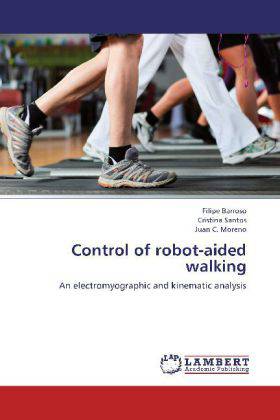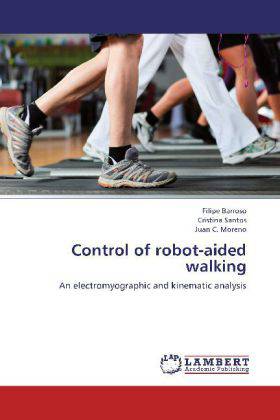
- Afhalen na 1 uur in een winkel met voorraad
- Gratis thuislevering in België vanaf € 30
- Ruim aanbod met 7 miljoen producten
- Afhalen na 1 uur in een winkel met voorraad
- Gratis thuislevering in België vanaf € 30
- Ruim aanbod met 7 miljoen producten
Zoeken
Control of robot-aided walking
An electromyographic and kinematic analysis
Filipe Barroso, Cristina Santos, Juan C. Moreno
Paperback | Engels
€ 86,45
+ 172 punten
Omschrijving
Nowadays there is an increasing percentage of elderly people. It is expected that this percentage will continue increasing, carrying huge organizational costs in rehabilitation services. Recent robotic devices for gait training are more and more regarded as alternatives to solve cost-efficiency issues and provide innovative approaches for training. However, some control strategies implemented in current robotic devices should be improved and validated. There is a need to address how to target muscular activation and kinematic patterns for optimal recovery after a neurological damage. The main objective of this work was to understand the underlying principals that the human central nervous system employs to synchronize muscular activity during walking assisted by a robotic gait trainer. Our tested hypothesis was that a basic low-dimensional locomotor program can explain the synergistic activation of muscles during assisted gait. As a main contribution, we generated a detailed description of the electromyographic and biomechanical response to variations in robotic assistance in intact humans, which can be used for future control strategies to be implemented in motor rehabilitation.
Specificaties
Betrokkenen
- Auteur(s):
- Uitgeverij:
Inhoud
- Aantal bladzijden:
- 172
- Taal:
- Engels
Eigenschappen
- Productcode (EAN):
- 9783659267031
- Verschijningsdatum:
- 7/11/2012
- Uitvoering:
- Paperback
- Afmetingen:
- 150 mm x 220 mm
- Gewicht:
- 259 g

Alleen bij Standaard Boekhandel
+ 172 punten op je klantenkaart van Standaard Boekhandel
Beoordelingen
We publiceren alleen reviews die voldoen aan de voorwaarden voor reviews. Bekijk onze voorwaarden voor reviews.








